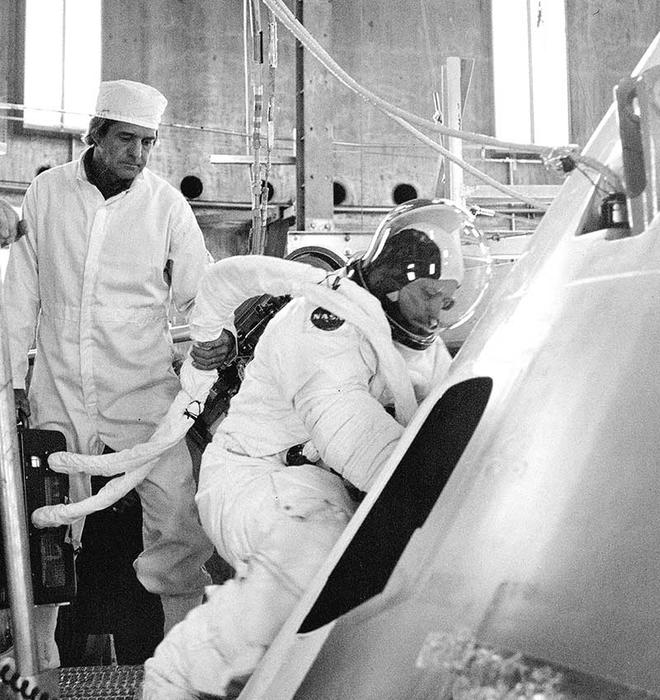
Aug. 22, 1932 – Aug. 26, 2020
In 1973, Jerry Carr *62 spent Christmas Day at work, hundreds of miles away from home. His assignment: a seven-hour spacewalk outside NASA’s orbiting Skylab. Carr likened it to the thrill a child gets from “climbing as high as he can up a tree and being able to see the whole neighborhood,” as he wrote in his journal. “I stopped every minute or so just to see what new thing had come into sight.”
Carr’s son Jeff calls it a pivotal moment in his father’s life. “I think that was the point at which it really hit him just how fragile our planet is,” he says. “It stirred in him a sense of custodianship.”
The Skylab mission was the apogee of a lifelong fascination with flight. As a teenager, Carr washed planes at Orange County (California) Airport in exchange for recreational rides. After graduating from the University of Southern California, he became a fighter pilot in the Marines and tested hybrid hovercrafts during graduate studies at Princeton. As an astronaut, he managed communications for iconic Apollo missions — including Pete Conrad ’53’s 1969 moonwalk — but his own flight, Apollo 19, was canceled because of budget constraints.
Carr finally went to space as commander of an 84-day Skylab mission, then the longest manned flight in history. It turned out to be a tumultuous ride, as the three-man crew struggled to keep pace with a relentless workload. Carr aired the team’s grievances to mission control and pushed for updates to the schedule. New Yorker contributor Henry S.F. Cooper later wrote that the crew had staged “a sort of sitdown strike,” and Harvard Business School created a case study based on the mission, titled “Strike in Space.”
The “strike” label may have been overblown, but the episode showcased Carr’s diplomacy and foresight. As crewmate Edward Gibson explained, Carr understood the mission was not merely to complete tasks but to set a course for productive long-duration flights in the future. “He had the courage to follow his vision and, after a heart-to-heart talk with the ground, we abruptly changed our mode of operation,” Gibson wrote.
After Skylab, Carr helped to design elements of the Space Shuttle and the International Space Station as a member of the astronaut corps and a subcontractor for Boeing. He also had a remarkable life away from the space industry with his second wife, painter and sculptor Pat Musick Carr, who shared her husband’s enduring interest in environmental stewardship.
Pat says she “broadened and enlarged the scope” of her art in the decades after Jerry’s retirement, putting his engineering know-how into service for her large sculptural works. Jerry joked that when Pat would tell him she had a new idea, he would reply, “How much does it weigh?” But the quip, she says, underplays his role as an artistic collaborator: “He was innately creative.”
Brett Tomlinson is PAW’s managing editor.
Hear Jerry Carr *62 talk about his NASA experience in this TED-Ed animation.






No responses yet